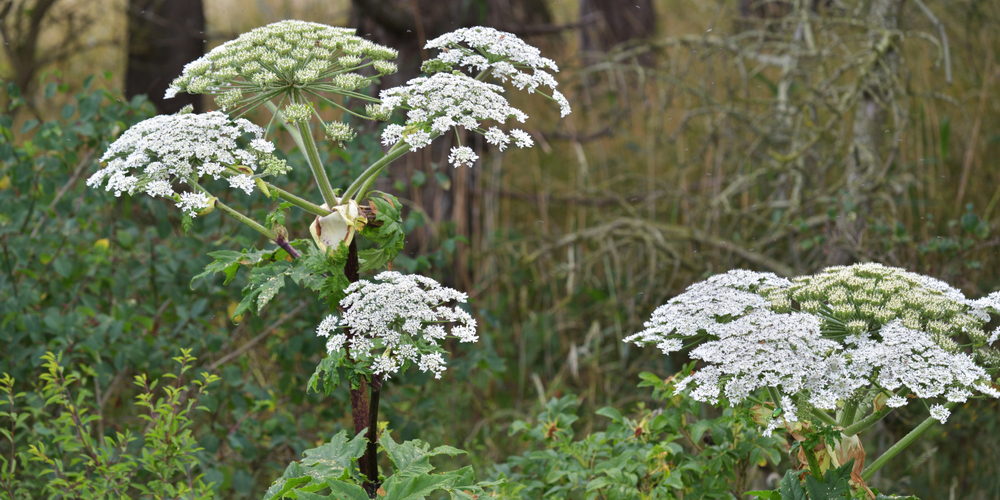Hogweed in Michigan is an invasive species. It is a restricted species meaning it is illegal to grow, move, or sell. It causes harm to people and other plants. It was introduced to the United States in the early 1900s and has since spread and become very difficult to control.
What Is Hogweed?
Hogweed is a plant that excretes a dangerous sap that can lead to burns when exposed to sunlight. It crowds other plants and leads to those dying while it thrives, spreading more and more of its seeds. Giant hogweed can disperse up to 20,000 seeds which take root and then take over the area.
Due to the burns it causes and how it easily overpowers other plants, it is invasive and needs to be controlled. Hogweed is in several states.
How To Identify Hogweed
Hogweed is a distinctive plant and can be easy to identify although there are many look-alike plants. It has an umbrella-shaped canopy of white flowers, which hold the seeds. Its stem is ridged and green with purple splotches. The stem is also covered in thick, white hairs. This plant has large leaves that can grow up to five feet wide and up to 14 feet tall.
Some plants share features of hogweed, but those also pose a danger to us. Never touch a plant that you think is hogweed. If you injure it, it will release its sap.
What To Do About Hogweed
If you identify a plant as hogweed, don’t touch it. Put some distance between it and yourself and call your local environmental organization. You can still call if you aren’t sure whether it is hogweed or another plant. They need to keep track of hogweed populations so they can control them.
How To Remove or Control Hogweed Yourself
If there is hogweed on your property, you can likely take care of it yourself. You should still call about the hogweed to ensure the local environmental agency knows about the hogweed. If you don’t want to take care of the plant, you can call someone to do it for you.
To remove the plant yourself, you must wear protective gear, including gloves, boots, and safety goggles to protect your eyes. Remember that when the sap gets on you and comes into contact with sunlight, it causes burns. Cover all of your skin, and do not wear something the sap can soak through.
Remove the Flowers
The flowers are what spread the seeds, so one method for controlling the hogweed is removing the flower heads. This is done before the seeds mature and are ready to disperse.
Wear safety equipment and have trash bags ready. Use sharp pruning shears to cut off the flower heads, making sure seeds don’t fall out. Bag them, then double bag them. If there is sap outside of the second bag, use a third.
If there are seeds in the dirt, you should remove that, too. Removing the flowers won’t do much if seeds remain and can grow.
You can use the heat from the sun to kill the seeds in the trash bags.
Cut the Plants Down
There are several ways to cut the plants down. You can cut their roots. This is efficient for smaller amounts of plants. Make sure to check in and ensure cutting their roots killed them.
You can completely cut down the plants to the ground and cover them with a tarp. Then you cover this tarp with mulch and let it sit. After a year, ensure no plants are growing and cover them back up. Eventually, all the plants will die.
Finally, you can mow down the plants. You must do this repeatedly, but after a couple of years, this can destroy a large amount of hogweed with little extra effort. Just be careful not to contaminate the rest of your yard with seeds from the hogweed stowing away on your lawn mower.
With all of these, you must ensure you are removing any flowers before you do this. You could end up dispersing the seeds. That will just cause more hogweed to grow.
The Bottom Line
Hogweed in Michigan is common and can be challenging to get rid of. Whether you deal with the hogweed yourself or have someone else do it, remember to alert the proper groups. They need to track populations of hogweed in Michigan and the United States. Wearing protective gear is vital for staying safe when handling and removing hogweed.

